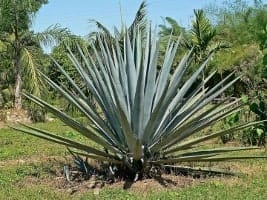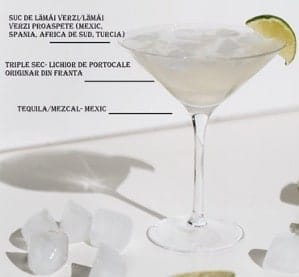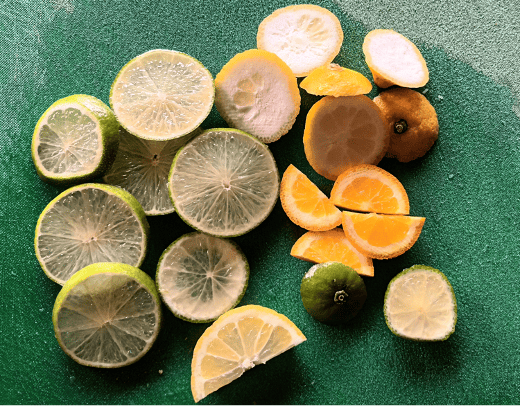Tequila, one of Mexico’s most exported products, is becoming increasingly popular in Europe. Just last year, exports saw significant growth, with examples including Spain (+90%), France (+73%), and the United Kingdom (+68%). When combined with the high demand from the United States, which imports over 250 million litres annually, there’s mounting pressure on Mexico’s agriculture, particularly on its agave crops.
Limes and citrus fruits, in general, serve as a universal garnish that embellishes a gin and tonic or a cocktail. However, a large portion of these fruits ends up being discarded, contributing to the broader issue of food waste, which accounts for half of the emissions in the global food system.
Given this context, a question arises: to make this sector sustainable and alleviate the pressure on supply chains and agricultural sectors of many countries, could we not consider responsibly consuming drinks with locally sourced ingredients?
An immediate analysis would reveal that a significant portion of beverages in our bars and restaurants, primarily, are of foreign origin. Gin, even though it’s produced in various countries, was originally popularised in the United Kingdom. Tonic water contains quinine, a product native to Central and South America. Rum hails from the Caribbean, and whiskey originates from the British Isles (Scotland and Ireland).
What’s evident is that the vast majority of highly popular beverages in Europe, including Romania, come from various corners of the world.
Romania is a significant consumer of whiskies and other types of alcoholic beverages, according to statistics from recent years. For instance, this includes whiskies from Scotland, Ireland, Japan, and other producing countries.

Volume of imported alcoholic beverages in Romania (2017-2019)
Tequila, Margaritas, and the Pressure on Mexico’s Agriculture
Tequila, one of Mexico’s most extensively exported products, is becoming increasingly popular in Europe. Whether consumed straight or as part of a cocktail like a Margarita, it has become an omnipresent component of bars worldwide.
As a result, just last year, exports saw significant growth, with examples including Spain (+90%), France (+73%), and the United Kingdom (+68%). This development has also placed pressure on the costs of agave fruit, which has fluctuated between 5-7 pesos over the last two decades and recently reached 31 pesos.
Furthermore, when we consider the substantial demand from the United States, which imports over 250 million litres of tequila, it’s evident that there’s mounting pressure on Mexico’s agriculture, particularly on its agave crops.
Mexican agriculture is grappling with the effects of climate change, manifested through:
1. Prolonged droughts: Even though agave plants thrive in arid zones, they require specific amounts of water at constant intervals.
2. Increased frequency of extreme phenomena: These include storms, anomalies of very low temperatures, natural vegetation fires, and more.
3. Impact on pollinators: Animals that pollinate this type of plant are affected by climate change. Particularly, a Mexican bat species called the Long-Nosed Bat (Leptonycteris nivalis) plays a crucial role in agave fruit pollination. Notably, when this bat species was first listed as an endangered species 30 years ago, there were fewer than 1,000 specimens. Today, their population has grown to around 200,000 bats living in 75 roosts in the southwestern United States and Mexico.

The Issue Created by Cocktails — Anatomy of Such Beverages and What We Can Deduce
A cocktail is a beverage that can contain one or more types of alcohol along with various ingredients such as fruits, fruit juices, certain vegetables, coffee, syrups, and more.

In the graph below, we’ve illustrated the composition of one of the most popular cocktails globally: the Margarita, which is based on tequila (and sometimes even mezcal). The ingredients, with minor exceptions, come from various distant parts of the world (Mexico, South Africa, France, etc.). According to estimations, on average, Americans consume around ~185,000 of such cocktails per hour in the United States.
The anatomy of a whiskey sour and the provenience of its ingredients

What could we do for more sustainable cocktails?
The bar industry, especially those specialised in cocktails, is known for its adaptability and creativity. Romania, for example, is a producer of various alcoholic beverages such as “țuică” (plum brandy), “palincă” (fruit brandy), and various liqueurs, which offer numerous possibilities.
For instance, in the case of a cocktail like a margarita, we could use a locally produced spirit, such as a sweet pear “palincă”, and somewhat reinvent a “classic” with a more “local” personality.
To reduce imports further, we could prioritise a premium Romanian whisky brand (single malt) and the possibility of using a globally popular product that is locally produced. Essentially, a partial reorientation of consumers, especially in Europe, towards locally produced beverages could be beneficial, given the encouraging signs already seen with microbreweries in the UK, France, and Romania.
Citrus and their impact on major producing countries

Spain is the country that produces and exports the largest volume of citrus fruits in Europe. However, the waste and discarded quantities of citrus fruits are enormous, especially in the bar industry, and at the same time, the packaging required for fruit juices results in excessive plastic consumption in Spain.
Therefore, the LIFE Citruspack plan was launched in 2020 as part of the European Green Deal, the EU’s plan for a circular economy aimed at making European businesses more sustainable by reducing waste quantities. Additionally, Researchers from the Catalan Institute of Chemical Research have developed a method for producing plastic materials from citrus peels that could replace the controversial chemical Bisphenol A.
Local Consumption — An Impactful Choice?
Climate change affects all regions of the planet, particularly in the realm of food, which includes the beverages we’re discussing today. The production of whisky in Scotland is already being affected by prolonged droughts that jeopardise local water reserves and malt harvests. Beer, too, is a product where key elements (water, malt, hops, and energy costs) are already under considerable stress due to climate change. Viticulture and wines, including in Romania, are already strongly influenced by aridification, temperature shifts, and precipitation changes observed in recent decades.
A feasible solution would involve changing consumer behaviour through public campaigns promoting local products. If we were to choose something local (either on a broader country level or a more localised level such as something from the Dobrogea region in the case of Romania), the situation could be optimised by reducing stress on supply chains, while the local economy would benefit.
For bars and restaurants, an option would be to source more from local suppliers (if available). A closer relationship with local fruit and vegetable producers could also lead to optimised quality and quantities of ordered products, thereby reducing waste. Additionally, the volume of plastic or cardboard packaging could be decreased.
Another approach would be for bars to grow certain ingredients in-house, where feasible. Many restaurants and cocktail bars in the UK have adopted this option, especially due to rising prices for all products as a result of inflation. Recycling (food waste) and composting of food waste also play a crucial role in reducing carbon emissions in this industry and closing the loop.
Menu flexibility is becoming increasingly common, especially in Europe. Menus can be adjusted relatively easily, and I recently had the chance to try a pear palinka-based margarita in the capital of Bulgaria. Romania, from this perspective, could benefit greatly due to the variety of available agricultural products.
Various types of drinks that were once associated only with specific countries, such as gin and whisky, are now produced in other countries, including Romania. This fact could pave the way for more pronounced sustainability and gradually reduce waste associated with the beverages we enjoy at the beginning of the weekend.

Master of Arts in Archaeology & History (MA), Certificate of Postgraduate Studies in Mediterranean & Venetian 16th Century History (1559-1581), University of Aberdeen, Scotland. Topics: Climate change policies in the USA & EU and their impact. Analysis of the Green New Deal in the USA and Europe. Sustainable policies in Scotland related to the beer and whisky industries. Coastal archaeology and the impact of climate change on respective communities.
Article first published on InfoClima

